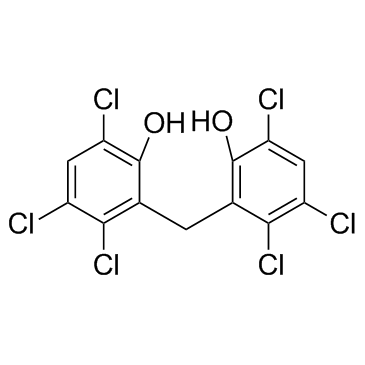Hexachlorophene and cuprizone induce the spongy change of the developing rat brain by different mechanisms: the role of 2', 3'-cyclic nucleotide 3'-phosphodiesterase (CNPase).
Takeshi Kanno, Satoshi Sasaki, Naoaki Yamada, Kazufumi Kawasako, Minoru Tsuchitani
文献索引:J. Vet. Med. Sci. 74(7) , 837-43, (2012)
全文:HTML全文
摘要
The goal of this research was to identify mechanisms responsible for the spongy change induced in rats after repeated hexachlorophene (HCP) or cuprizone (CPZ) dosing. Rats were dosed with 35 mg/kg HCP for 5 days followed by drug withdrawal for 7 days suffered spongy changes to the white matter of the cerebrum, cerebellum, medulla oblongata, and spinal cord that were accompanied by degeneration of oligodendroglia. The severity of both lesions increased prominently on day 5; however, the spongy change decreased and degeneration of oligodendroglia reversed on day 12 (7 days after dosing ceased). On day 12, cerebral cortex oligodendroglia were stained strongly by anti-CNPase. Other rats were fed for 8 days with powdered chow containing 1% (w/w) CPZ, which was then withdrawn for 16 days. The rats exhibited the spongy change in the white matter of the cerebrum and cerebellum as well as oligodendroglial cell death from day 3. The severity of both lesions increased prominently on day 8. Cerebral cortex oligodendroglia were stained strongly by anti-CNPase on days 3 to 8 and decreased to the control levels by day 24 (16 days after dosing ceased). Electron microscopy revealed that oligodendroglia frequently displayed apoptotic morphology. These findings suggest that CNPase expression was induced in the course of restoration following HCP-induced insults to oligodendroglia and the myelin sheath, and in the course of demyelination by CPZ-induced damage to oligodendroglia. However, the role of CNPase on both courses is unclear.
相关化合物
| 结构式 | 名称/CAS号 | 分子式 | 全部文献 |
|---|---|---|---|
 |
六氯酚
CAS:70-30-4 |
C13H6Cl6O2 |
|
Cheminformatics analysis of assertions mined from literature...
2010-01-01 [Chem. Res. Toxicol. 23 , 171-83, (2010)] |
|
Translating clinical findings into knowledge in drug safety ...
2011-12-01 [J. Sci. Ind. Res. 65(10) , 808, (2006)] |
|
Developing structure-activity relationships for the predicti...
2010-07-19 [Chem. Res. Toxicol. 23 , 1215-22, (2010)] |
|
A predictive ligand-based Bayesian model for human drug-indu...
2010-12-01 [Drug Metab. Dispos. 38 , 2302-8, (2010)] |
|
Surfactants, aromatic and isoprenoid compounds, and fatty ac...
2009-05-01 [Antimicrob. Agents Chemother. 53 , 1898-906, (2009)] |